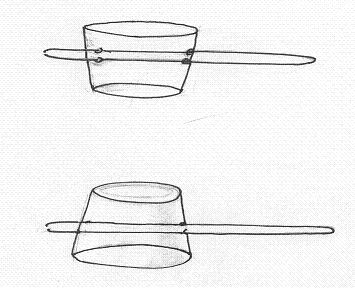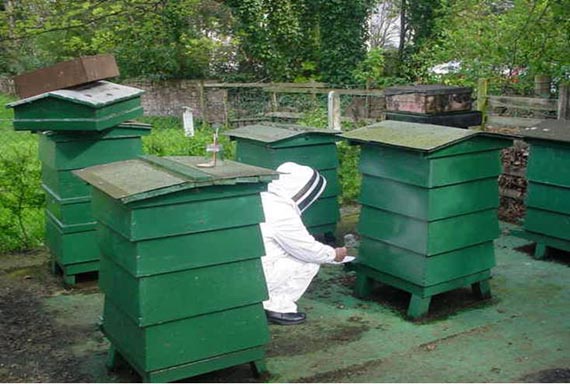An Early Spring Tonic for your bees?
As a former beekeeper, I remember the excitement each Spring to see the hives start into life, with the bees cleansing flights. And the first foraging outings, with the returning bees with their ‘shopping bags’ full of pollen!
I remember the anxiety that they may catch a chill, and not survive back to the hive, and the accompanying relief when the hive was obviously thriving.
It is a time when the insects and bees are at their most vulnerable. The queen is stimulated to start laying eggs at the start of the season by foraging bees bringing in protein-rich pollen. In January/February there are few plants in blossom. It is a small number of native trees, which provide the most reliable source. These are mainly Alder, Yew, Hazel, and Willow.
The reason that I am submitting this article for the magazine is my interest in Native Willow species and my journey of discovery while studying Environmental Management at college. As part of these studies I was required to do some research on a specialist subject of my choice, and write an academic thesis. I started with a hypothesis that – Early in the year many insects benefit from the pollen of various species of Willow.
My research covered many aspects of a diverse habitat – that provided for native flora and fauna, by our native trees. I read widely about native trees and their flowering mechanisms, and about the life cycles of different insects. I sought information about food chains and webs but the section I think will interest fellow beekeepers is the work I did, and the experiments, on the pollen collected by bees early in the year. To prove or disprove my hypothesis I had to devise an experiment to allow me to sample, collect, and examine the pollen gathered by the bees.
I needed to either install a pollen trap or remove the pollen from the returning bee. AND I DIDN’T HAVE AN APIARY OR ANY BEES!
 This could have been a major difficulty, but fortunately I was remembered at Wirral Branch of C.B.K.A. and David Collenso offered to let me use his nearby apiary. I had advice from John and Christine Hebron and the loan of specialist books on pollen. Fortunately I had my bee suit and retained some confidence working with our buzzy friends.
This could have been a major difficulty, but fortunately I was remembered at Wirral Branch of C.B.K.A. and David Collenso offered to let me use his nearby apiary. I had advice from John and Christine Hebron and the loan of specialist books on pollen. Fortunately I had my bee suit and retained some confidence working with our buzzy friends.
The ‘Tree’ books stated that willow flowered from February – May. My first shock was to discover a mature Goat willow (Salix caprea) in full blossom on January 27th 2005 I WAS TOO LATE! Although I had been watching David’s bees since the beginning of January.
I quickly worked out that I could not subject David’s bees to opening the hive in January/February, to fiddle about with a pollen trap. To make my experiment a viable scientific study I needed to record the Dates, Times, Temperatures of the bee flights and catch the bees as they returned, on the alighting board. I had to remove the pollen from their legs, and preserve it in the freezer. Then at the end of the period, I had to learn how to mount the specimens on a slide and relearn my microscopy skills to discover what the bees had been collecting. The college were allowing me minimal expenses for any equipment (and what I seemed to need hadn’t been invented!).
My first job was to make a bee-catcher. I made one from a small plastic cup with a wire hoop as a handle. It was an unusual, and not too scientific, experiment and I had many adventures with the bees during the three months I was observing the hive.
My results were to pose more questions than they answered but the study was an entirely fascinating experience.
If the Editor can find space I would like to continue the story in the next issue.
The thesis I submitted to Glamorgan University can be found on David Cushman's Web Site. URL http://www.dave-cushman.net/bee/pollenthesis.html
Sylvia Briercliffe

Latest Articles:
Archive Articles:
©2007 Cheshire Beekeepers' Association